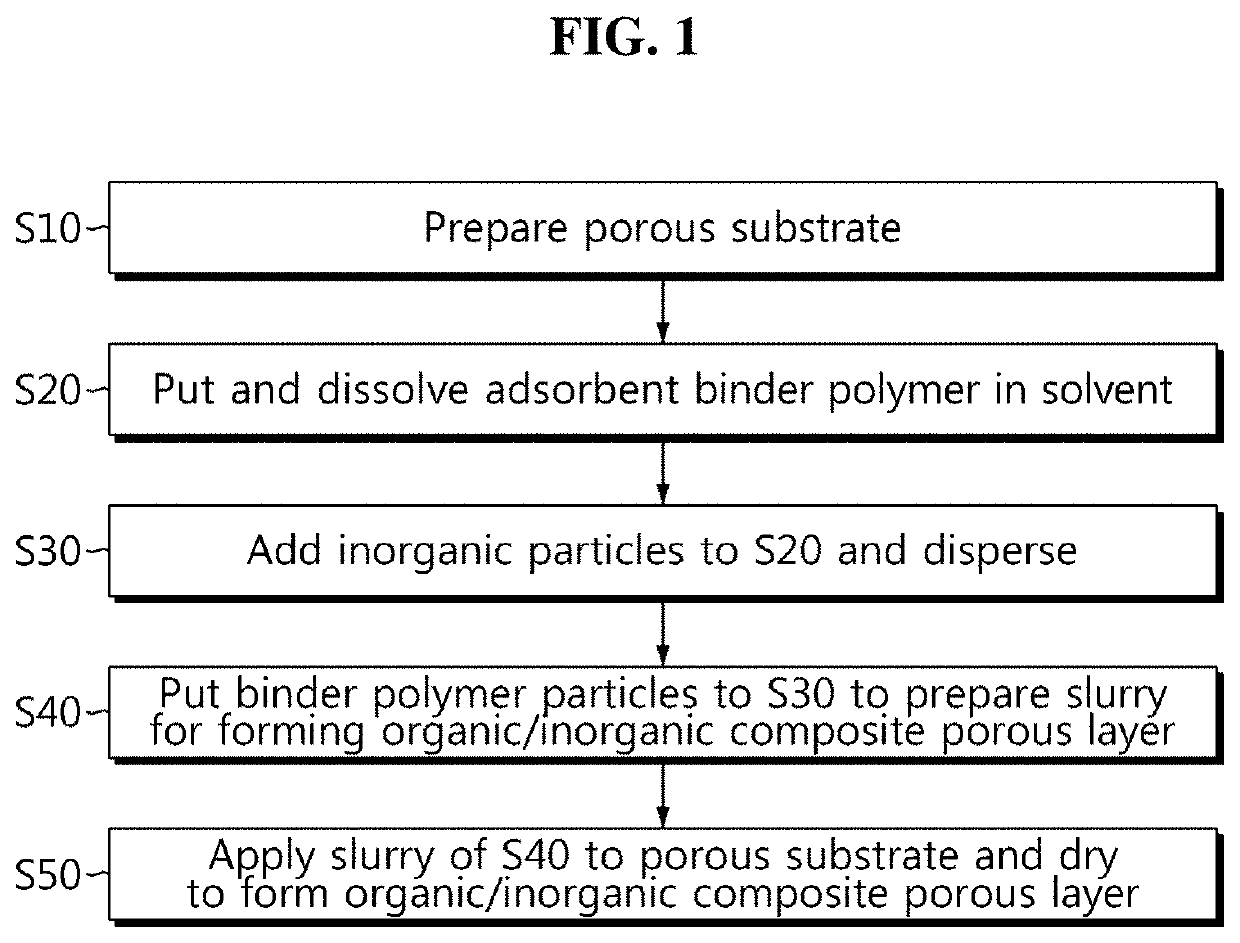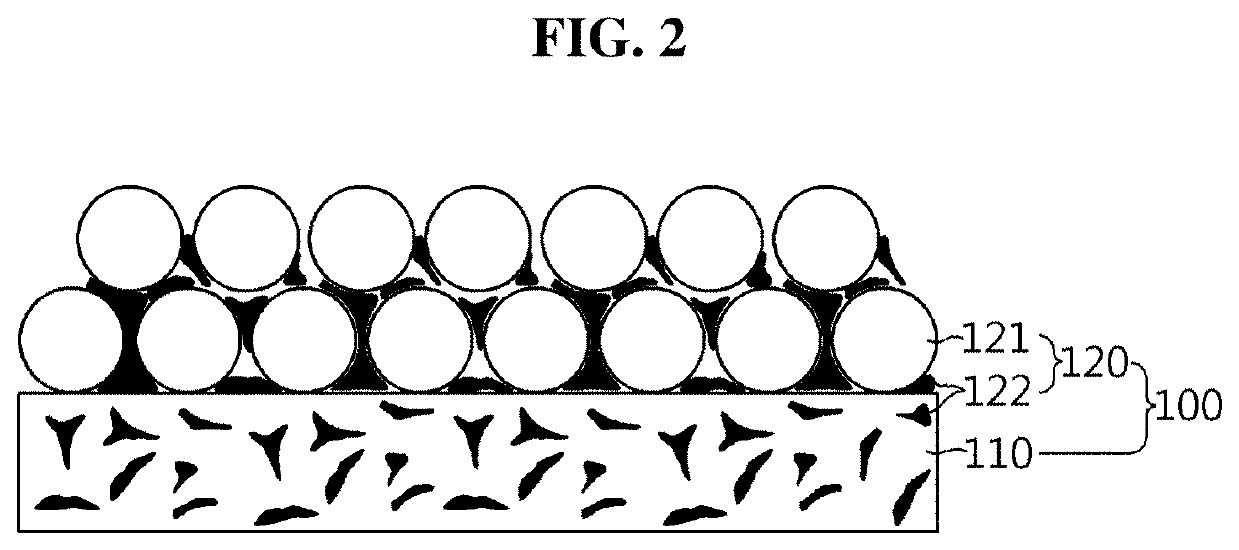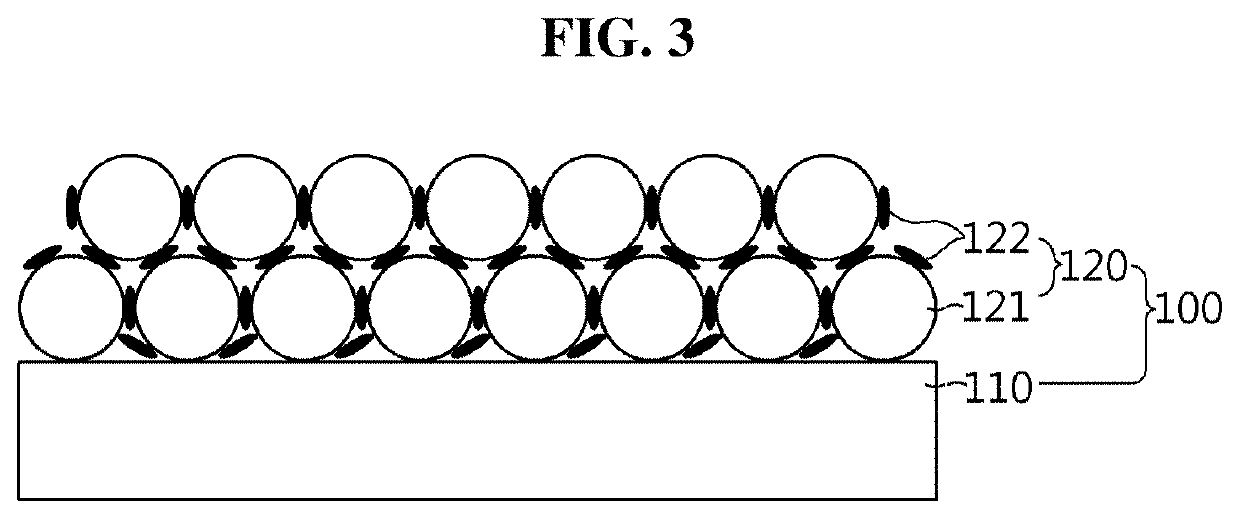Secondary battery separator comprising organic/inorganic composite porous layer, and manufacturing method therefor
a composite porous layer and secondary battery technology, applied in the field of porous separators, can solve the problems of high thermal shrinkage of the separator made of polyolefin, battery performance degradation, and high risk of failure, and achieve superior heat resistance and mechanical properties, outstanding air permeability characteristics, and less prone
- Summary
- Abstract
- Description
- Claims
- Application Information
AI Technical Summary
Benefits of technology
Problems solved by technology
Method used
Image
Examples
example 1
[0081]Al2O3 (Nippon light metal, LS235, particle size 510 nm), waterborne acrylic emulsion (Toyo ink, CSB130, solids 40%, particle size 177 nm), and carboxymethylcellulose (GL Chem, SG-L02, radius of gyration 25 nm) were put in water at a ratio of 98:1:1 and stirred to obtain a uniform dispersion slurry. The slurry was applied to one surface of a polyethylene porous substrate (W scope, WL11B, air transmission time 150 sec / 100 cc) using a doctor blade and dried with cool air to manufacture a porous separator having an organic / inorganic composite porous layer. The air transmission time of the manufactured separator was at the level of 153 sec / 100 cc that was almost unchanged when compared to the air transmission time of the polymer substrate before formation of the organic / inorganic composite porous layer.
example 2
[0082]Except that Al2O3 was replaced with AlOOH (Nabaltec, Actilox200SM, particle size 230 nm), and a mix ratio of a slurry was adjusted such that a ratio of inorganic particles:organic particles:thickener was 94:3:3 on the basis of a weight ratio, a porous separator was manufactured in the same way as example 1. The air transmission time of the manufactured separator was at the level of 163 sec / 100 cc that was almost unchanged when compared to the air transmission time of the polymer substrate before formation of the organic / inorganic composite porous layer.
PUM
| Property | Measurement | Unit |
|---|---|---|
| particle size | aaaaa | aaaaa |
| particle size | aaaaa | aaaaa |
| radius of gyration | aaaaa | aaaaa |
Abstract
Description
Claims
Application Information
 Login to View More
Login to View More - R&D
- Intellectual Property
- Life Sciences
- Materials
- Tech Scout
- Unparalleled Data Quality
- Higher Quality Content
- 60% Fewer Hallucinations
Browse by: Latest US Patents, China's latest patents, Technical Efficacy Thesaurus, Application Domain, Technology Topic, Popular Technical Reports.
© 2025 PatSnap. All rights reserved.Legal|Privacy policy|Modern Slavery Act Transparency Statement|Sitemap|About US| Contact US: help@patsnap.com



